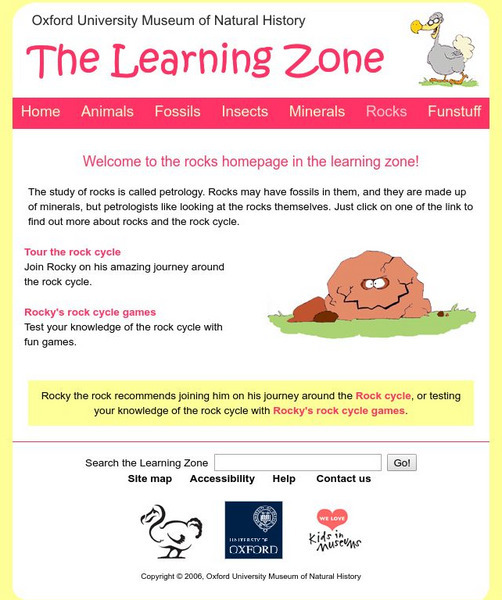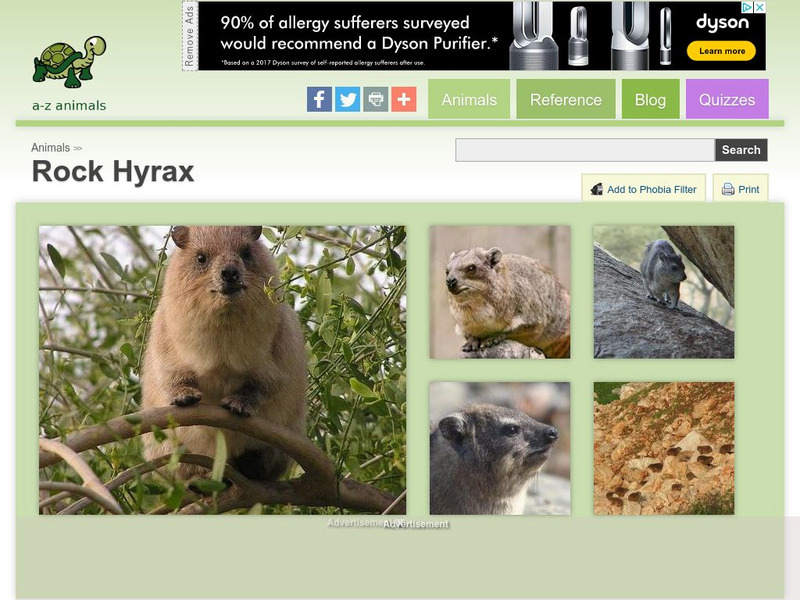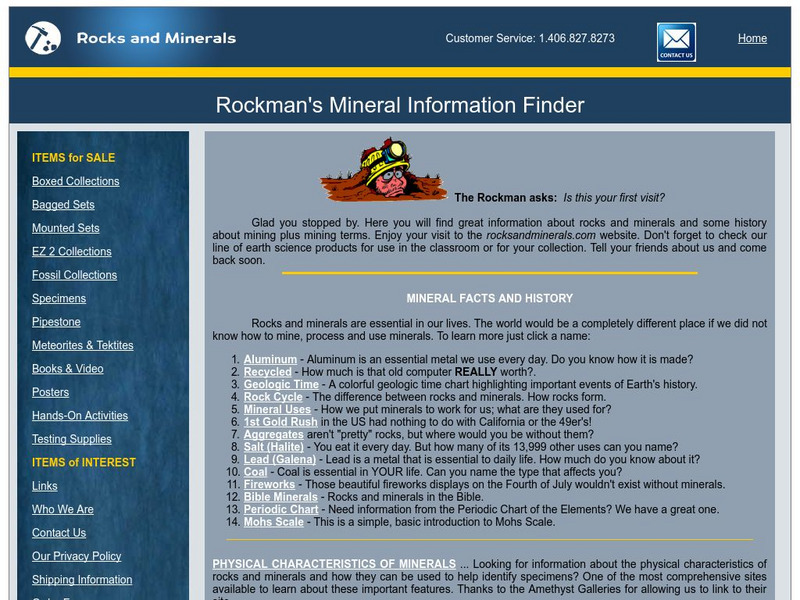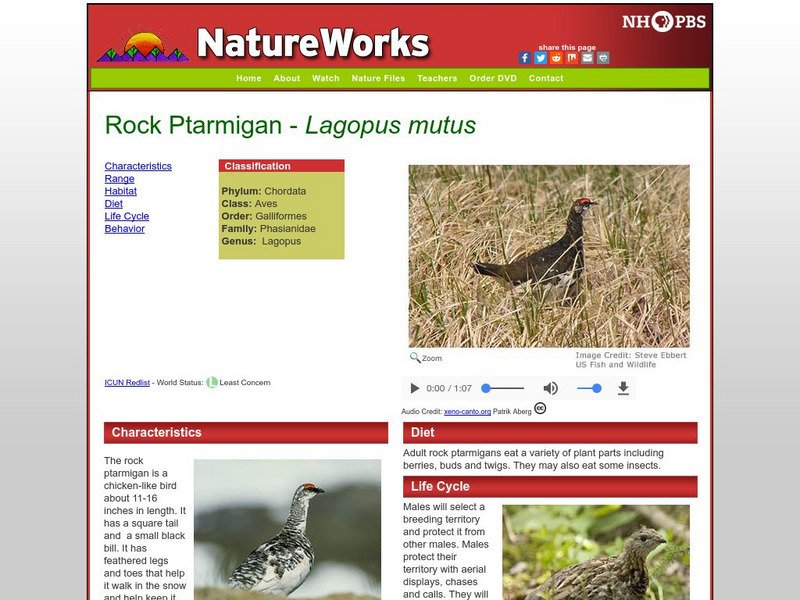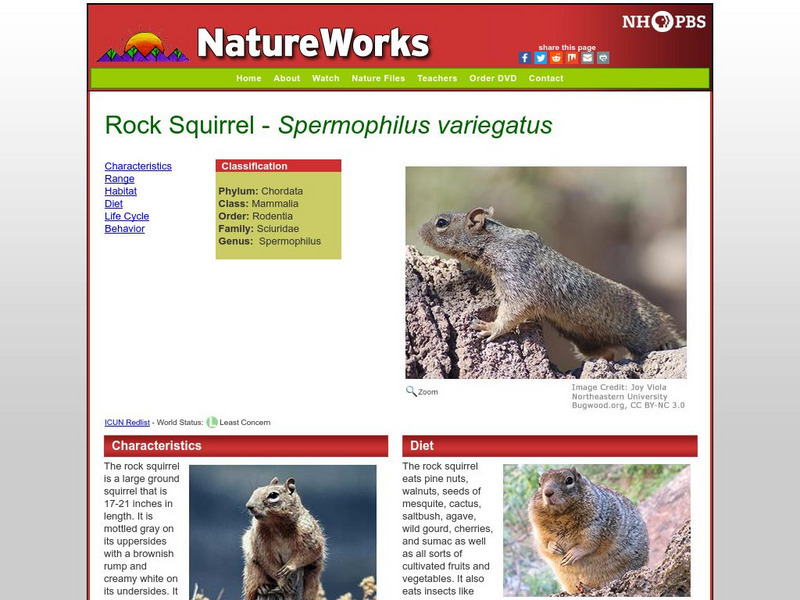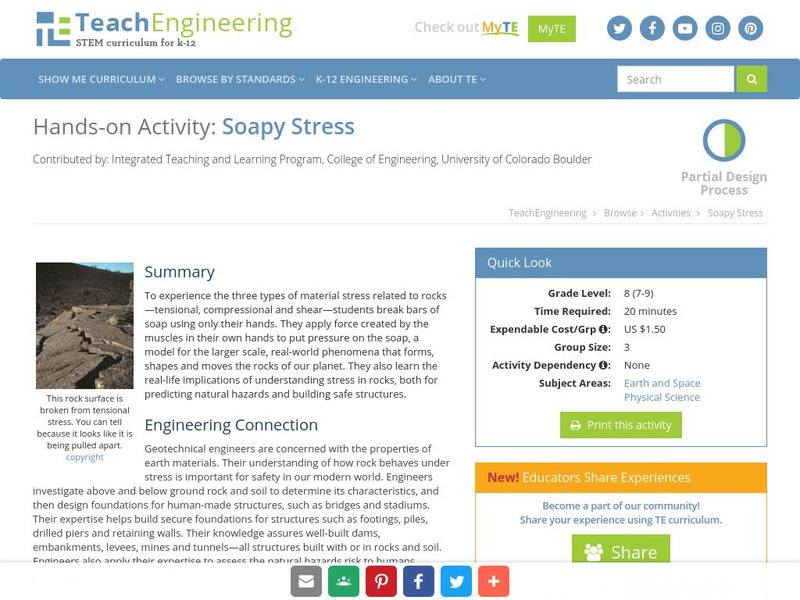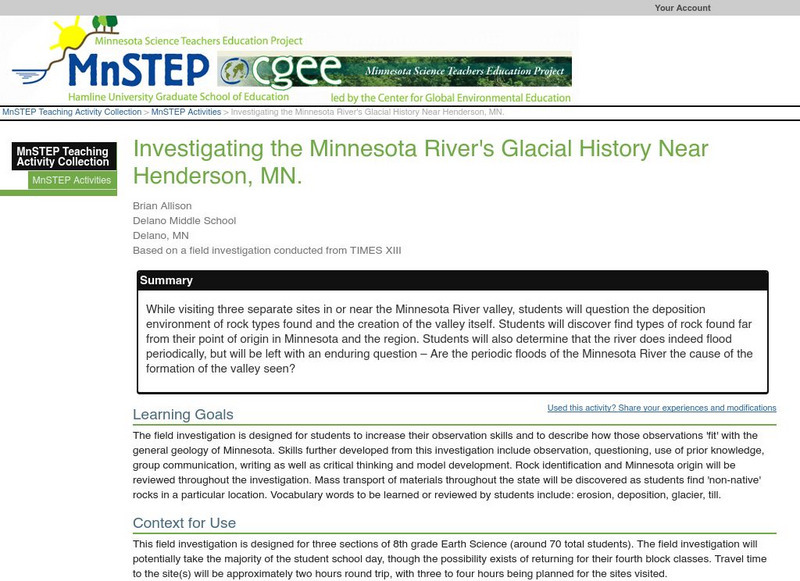Scholastic
Scholastic: Study Jams! Science: Landforms, Rocks & Minerals: Sedimentary
A slideshow, a karaoke song to sing along to, and a short multiple-choice quiz on sedimentary rocks and how they are formed.
University of Oxford (UK)
Oxford Museum of Modern History: Rocks
The study of rocks is called petrology. Rocks may have fossils in them, and they are made up of minerals, but petrologists like looking at the rocks themselves. Just click on one of the link to find out more about rocks and the rock cycle.
Science Education Resource Center at Carleton College
Serc: Investigating Rock Layers and Fossils to Infer Past
This activity is an inquiry-based field investigation of the sedimentary geology of Lilydale Regional Park's brickyards area, a bluff and slope location near St. Paul Minnesota's Harriet Island and Cherokee Heights Park. Learners...
Mocomi & Anibrain Digital Technologies
Mocomi: Types of Rocks
Explains how rocks are classified into three basic groups.
Idaho State University
Idaho State University: Environmental Geology: Earth Material and Earth Cycles
Help students to understand the Geologic Cycle, Hydrologic Cycle, Physical Properties of Rocks and Surficial Processes with this learning module. Find lessons covering each topic.
New York Times
New York Times: Crossword Puzzle: Rocks and Minerals
Here is an interactive and printable crossword puzzle developed by the New York Times Learning Network. The theme of this puzzle is Rocks and Minerals.
PBS
Pbs Learning Media: Explosion
Video writing prompt where students are asked to explain how lava is involved in the rock cycle. [0:32]
ArtsNow
Arts Now Learning: Magic Rocks [Pdf]
In this lesson, students work in groups with each acting as a predator, prey, or family member in a particular habitat. They present their habitat performance to the class and students identify the habitat and animal relationships. Then,...
A-Z Animals
A Z Animals: Animal Facts: Rock Hyrax (Procavia Capensis)
Provides photographs and a fact card about the rock hyrax, an unusual mammal that looks like a rodent yet is related to the elephant. Discusses its physical characteristics, distribution and habitat, behavior and lifestyle, life cycle,...
Science4Fun
Science4 Fun: Rocks
What are rocks? Learn about the different types of rocks and how they are formed.
Other
Rockmans Trading Post: Welcome to the Mineral Information Finder
During your lifetime, you will use more than a million pounds of rocks, minerals, and metals. Dig through this web site and find out how.
Channel 4 Learning
Science Essentials: Rocks and Soils
Learn what rocks are, how they turn into soil, and their many different uses. Educational extras include a glossary, some do-at-home activities, a quiz, and answers to frequently asked questions.
PBS
Nh Pbs: Nature Works: Rock Ptarmigan
Discover how the Rock Ptarmigan lives in the Tundra when you check out this site. This resource features photographs, information on characteristics, life cycle and more.
PBS
Nh Pbs: Nature Works: Rock Squirrel
This site provides a look at the Rock Squirrel. Come and explore the characteristics, life cycle, diet, habitat, behavior and range of this fascinating rodent.
TeachEngineering
Teach Engineering: Soapy Stress
To experience the three types of material stress related to rocks - tensional, compressional and shear - students break bars of soap using only their hands. They apply force created by the muscles in their own hands to put pressure on...
Science Education Resource Center at Carleton College
Serc: Investigating the Minnesota River's Glacial History Near Henderson, Mn.
While visiting three separate sites in or near the Minnesota River valley, students will question the deposition environment of rock types found and the creation of the valley itself. Students will discover find types of rock found far...
TeachEngineering
Teach Engineering: Tunnel Through!
Students apply their knowledge about mountains and rocks to transportation engineering, with the task of developing a model mountain tunnel that simulates the principles behind real-life engineering design. Student teams design and...
Other
Caterpillar: Ground Rules: Mining Right for a Sustainable Future [Pdf]
This set of lesson plans was developed to accompany Ground Rules: Mining Right for a Sustainable Future, a documentary film created by Caterpillar and Science North. They introduce students to the various phases involved in mining,...
The Franklin Institute
Franklin Institute: How Sedimentary Rock Is Formed
The Franklin Institute describes the way sedimentary rock is formed, with links to descriptions of several types of sedimentary rocks.
Minerals Ed
Mineral Resources Education Program of Bc: Mine Development Cycle
Take a look at how a mine develops from the exploratory stage to reclamation of the land.
Science Education Resource Center at Carleton College
Serc: An Investigation Into Geologic Mapping: Quarry Park
In this geology field lab, students will map an area around Quarry 12 and Quarry 13 in Quarry Park. Using a field notebook, students will take field observations to later produce a basic geologic map, topographic map, and a...
Geography 4 kids
Geography4 kids.com: Start at the Center
Consider the processes the rocks on the surface of the earth have gone through.
University of California
The University of California: Chronological Methods 3 Superposition
One of the most fundamental principles of archaeology is the Law of Superposition. This website provides a diagram showing you the Law of Superposition.




